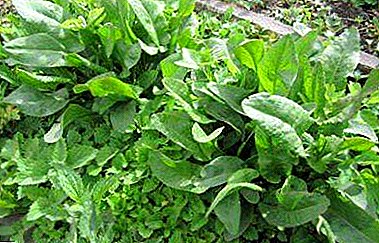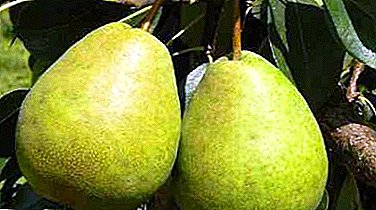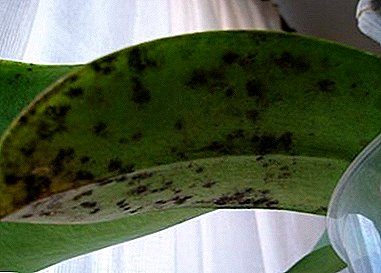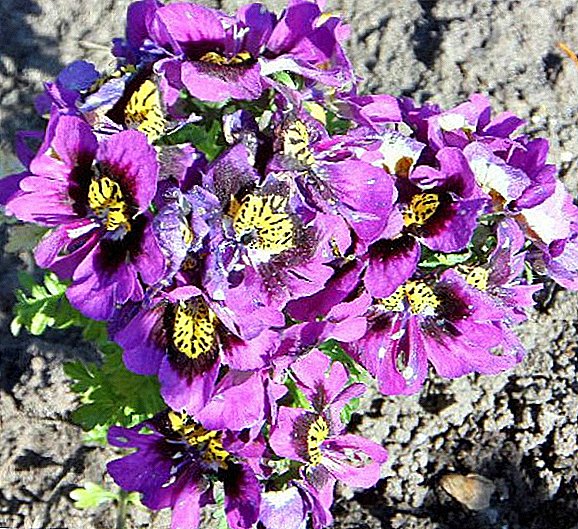 Schizantus - A wonderful plant from the family of the Solanaceae, which can unobtrusively, but gracefully decorate your summer cottage. The flower is good because it is very beautiful, branchy and unpretentious in the care. In this article we will tell about this plant, we will understand what kinds of it we can plant at home and how to care for it.
Schizantus - A wonderful plant from the family of the Solanaceae, which can unobtrusively, but gracefully decorate your summer cottage. The flower is good because it is very beautiful, branchy and unpretentious in the care. In this article we will tell about this plant, we will understand what kinds of it we can plant at home and how to care for it.
Botanical description
The homeland of the schisantus (or schizantus) - South America and South Africa, this is where this lush biennial is a very common wild plant. The plant is very branched with many small flowers.  Many of his flowers resemble an orchid. In this case, the petals of flowers are painted in bright juicy colors with a variety of patterns of dots and dashes.
Many of his flowers resemble an orchid. In this case, the petals of flowers are painted in bright juicy colors with a variety of patterns of dots and dashes.
Did you know? Schizantus is a plant from the Solanaceae family; potatoes, tobacco and vegetable pepper belong to the same family.
In our area, the schizantus has not yet gained wide distribution, but many gardeners are already paying their attention to this plant.
Kinds
In the wild, there are 15 types of schizantus, but man uses in design only the most beautiful of them. The most common for disembarking are the following types:
- Cirrus Schizantus - it grows up to 45 cm in height, does not branch so much compared with other species, but on the other hand there are many racemes at the ends of its branches. Its flowers are most often violet and have purple blotches. The species is also used to create various hybrids of this plant.

- Schizanthus Graham - this flower grows to 60 centimeters, it is very branched, and the stems of this plant are tough. Flower petals are colored pink or light purple, they are literally covered with yellow spots and purple lines. If this type of plant is used for hybridization, then the result is white, red and purple flowers.
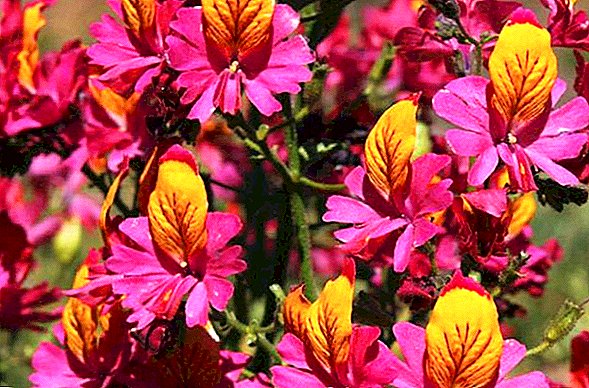
- Vizetonsky shizantus. This plant is a hybrid of the feathery schisantus and Graham's schizantus. From these two species, the flower took over the best qualities: it grows to 80 centimeters, it is strongly branched and has an abundance of flowers on its branches. Both the leaves and the petals of the flowers have a subtle, rugged shape, and in size the average flower reaches 2 centimeters in diameter.
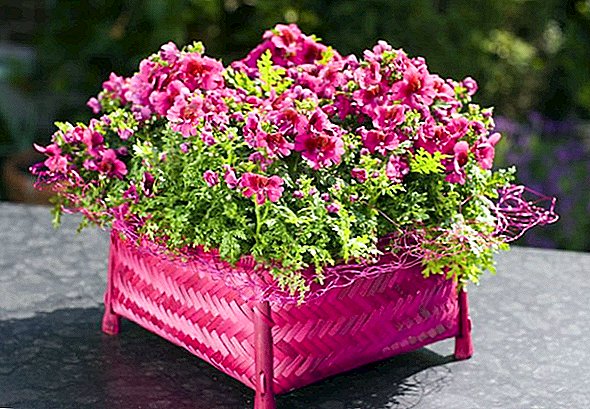
These are the most common species of this flower, which grow in gardeners. Consider how you can grow this plant from seed.
Growing from seed
This flower is propagated by seeds, and the most favorable time for breeding is considered to be August or September.
Seedling
Schizantus seeds are sown in a tank with an air-ground mixture in which there should be sand. Seeds on such a soil need a little sprinkle with earth, and cover the container with glass or film to preserve moisture. When the seeds germinate and grow on the shoots of two leaves, they are seated 1-3 pieces in separate pots.
The potted schizantus must be set in a well-lit place, but with a low above-zero temperature, so that the sprouts overwinter and grow in spring.  Already in March or early April, schizantus are sown on seedlings, but such plants bloom late, and their flowering is not very lush.
Already in March or early April, schizantus are sown on seedlings, but such plants bloom late, and their flowering is not very lush.
If you want to achieve continuous flowering of schisantus, then the seedlings need to be planted several times in the period from September to April, adhering to monthly intervals.
Important! If you plant a shizantus in a poorly lit place, it will greatly stretch up and poorly flourish.
Seedlings are best planted at a time when the air temperature will be stably within + 16 ... +18 ° C.
Video review of the grown schisantus seedlings
Location
This flower is very fond of sunny places, so it is best to plant it on a site with intense daylight.
In order for the plant to grow beautiful, you need to plant it in fertilized, loosened soil.
Schizantus is planted at a distance of 25 centimeters between seedlings and buried sprouts to a depth of 10 centimeters.
The soil
In order for the plant to grow well and bloom profusely, you need to carefully consider the soil in which it will be planted. It is best to plant a flower in chernozem.
The ground should be moderately moist, for a more vibrant color of the flower it is better to fertilize the soil with phosphate fertilizers.
We advise you to get acquainted with the system of fertilizers for different types of soil, also find out in what ways you can improve soil fertility.
Plant Care
In order for this flower to please you as long as possible, you need to carefully consider caring for it.
Temperature
Schizanthus does not tolerate high and low temperatures, the best option for this flower is the range of + 15 ... +24 degrees. 
Watering
This flower needs moderate watering, so that the soil is not too dry or wet. Watering the schisantus should be carefully, a stream of water to direct under the root, so as not to damage the fragile flowers.
Humidity
Shizantus needs moist air and does not tolerate dryness. The most optimal humidity will be 70-80%.
Top dressing
In the active period of growth, which falls in the spring and summer, the plant is fed complex fertilizers. Such fertilizers include nitrogen, phosphoric acid and potassium.
Important! It is recommended to begin top dressing at the stage of growing seedlings, adding fertilizer to the water.
In the spring, the frequency of feeding is reduced to once every two weeks, and during flowering the plant is fertilized once every seven days. But during the period of active growth, it is necessary to reduce their concentration, thus feeding the plant more often, but with a smaller amount of fertilizer.
Bloom
Many gardeners want to extend the wonderful flowering of the schisantus. If after the flower blooms for the first time, you cut it, then after three weeks it will begin to bloom even stronger.
Wintering
Shizantus is a biennial plant that cannot winter on the street. To save a flower, it is worth moving it to the house. In the spring, you can again plant it in a flower bed. 
In landscape design and combination with other plants
When forming beds with these flowers they are always planted in the foreground, because the bushy flowers look very bright and beautiful. On the flowerbeds, high schisantus are surrounded by lobelia, baptismalists and alissum.
Did you know? Often weak seedlings can give a very bright unusual color, so many gardeners do not throw such specimens.
The main rule of the neighborhood of this flower is that it should be planted next to plants that love moisture. Low shizantusa types are planted in pots and they decorate the terraces and balconies. 
Difficulties in growing
The main problem that occurs during the cultivation of this flower is the drying of the sprout. This problem occurs in dry areas with a lack of watering.
The opposite problem is considered to be rotting schizantus due to an overabundance of moisture. Therefore, to keep the flower in order, you should carefully consider the humidity of the air in the room and the frequency of watering.
Diseases and pests
These flowers are characterized by such diseases as:
- Anthracnose - affects the plant with high humidity, high acidity of the soil, as well as a lack of potassium or phosphorus in the soil. You can notice it on the brown spots on the leaves of schizantus.
We recommend to know what is important soil acidity for plants, how to determine the acidity of the soil on the site, as well as how to deoxidize the soil.
- Pitioz - so called root rot, it develops due to excessive watering or excess nitrogen fertilizers in the soil.
- Late blight - fungal infection of the leaves of schisantus, which can be seen by patina and characteristic spots.
In order to prevent the development of diseases, you should regularly inspect the plant and immediately remove the affected leaves and stems, and treat the places of removal with a fungicide.
Among the pests include eternal aphid, whitefly and thrips. These insects are fought with insecticides.  Do not be afraid to grow a schisantus in your flower bed. This unpretentious plant will not require excessive care from you, but it will perfectly decorate your flower garden.
Do not be afraid to grow a schisantus in your flower bed. This unpretentious plant will not require excessive care from you, but it will perfectly decorate your flower garden.






